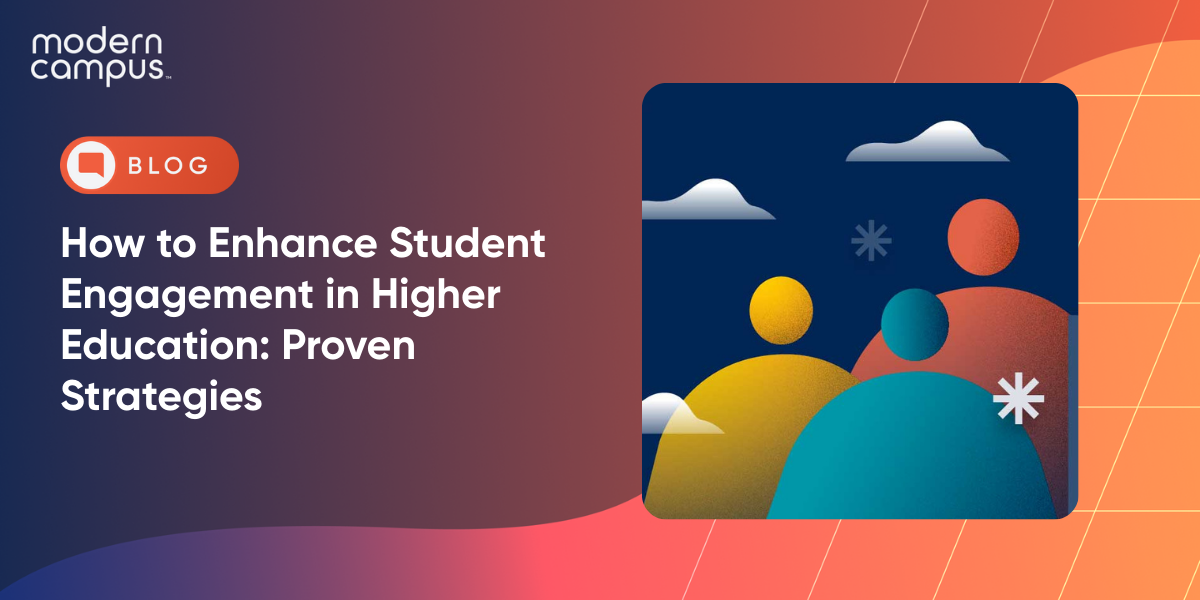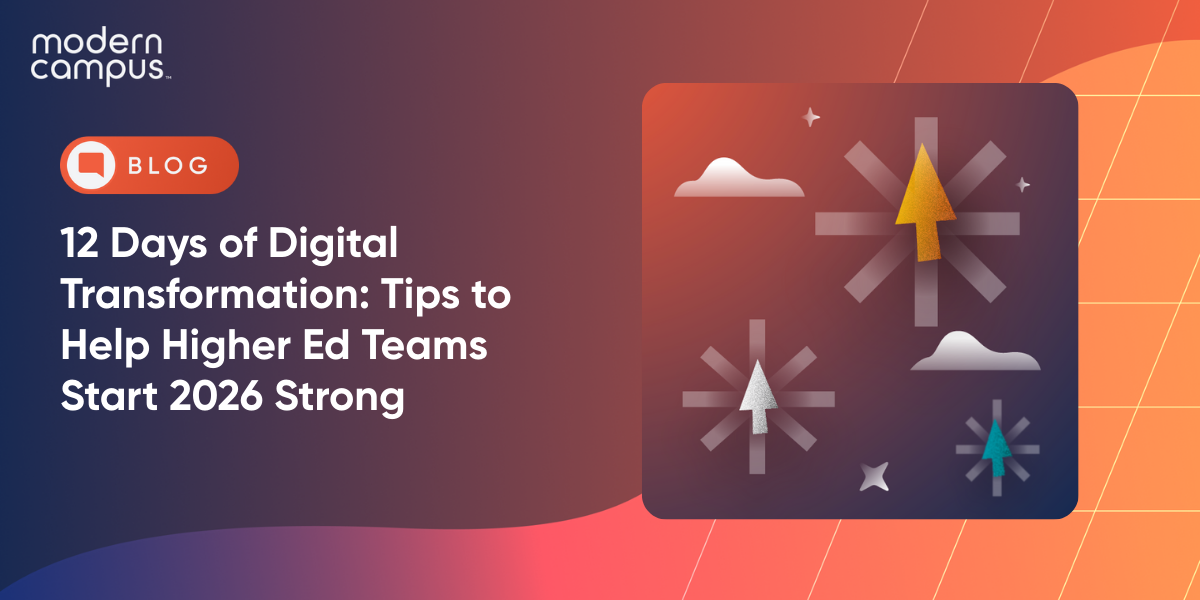What to Look for in a Student Information System for Higher Ed
Modern higher education institutions need robust student information systems to effectively manage complex data and operations. Key considerations include comprehensive feature sets that support the entire learner lifecycle, stringent FERPA compliance and security measures, seamless integration capabilities with existing campus technology and intuitive user experiences for both staff and students. Choose a system built specifically for higher education that can scale with your institution's growth and provide the analytics needed for data-driven decision making.
Higher education is experiencing unprecedented digital transformation pressure. With 55% of college students now belonging to Gen Z, a generation that expects seamless digital experiences, institutions can no longer rely on outdated administrative systems. Ninety-seven percent of institutions report experiencing cybersecurity breaches or attacks, making secure, modern student information systems critical for institutional success.
A student information system for higher education serves as the technological backbone that manages everything from enrollment and academic records to financial aid and student engagement. As institutions face increasing pressure to modernize their operations and improve student outcomes, they must make strategic decisions about their core technology infrastructure. Choosing the right SIS is the first step to enabling institutional transformation.
Why Do Institutions Need a Modern Student Information System for Higher Education?
The traditional approach to student data management through disparate systems and manual processes creates operational bottlenecks that modern learners won't tolerate. Students expect the same level of digital sophistication they experience with consumer technology, while institutions face mounting pressure to demonstrate value and improve outcomes.
Higher education institutions are simultaneously confronting multiple challenges: declining enrollment numbers, increased cybersecurity threats, and the need for better data-driven decision making. EDUCAUSE research shows that institutions are prioritizing digital transformation and institutional resilience, with technology leaders focusing on systems that can adapt to changing needs while maintaining security and efficiency.
A modern higher ed SIS centralizes student information, automating routine administrative tasks and providing real-time analytics that support strategic planning. When institutions implement purpose-built higher ed SIS platforms, they typically see significant improvements in operational efficiency, student satisfaction and staff productivity.

The shift toward comprehensive student information systems also reflects broader changes in higher education demographics and delivery models. With more non-traditional students seeking flexible learning options and institutions expanding their continuing education offerings, the need for systems that can handle diverse student populations and program types has become essential.
What Essential Features Should Your Higher Ed SIS Include?
Modern student information systems for higher education must deliver comprehensive functionality that supports the entire student lifecycle while remaining intuitive for daily users. The most effective modern SIS platforms integrate multiple administrative functions into a cohesive student data platform that eliminates data silos and streamlines workflows.
Enrollment and Admissions Management
Effective enrollment management capabilities form the foundation of any quality higher ed SIS. These tools should automate application processing, track prospective students through the admissions funnel and provide real-time visibility into enrollment metrics. Look for systems that offer customizable online application portals, automated communications and integration with recruitment and marketing platforms.
The best enrollment management features include lead scoring, application tracking and automated follow-up sequences that nurture prospects through the decision-making process. Advanced systems also provide predictive analytics that help admissions teams identify the most promising candidates and optimize their outreach strategies.
Academic Records and Transcript Management
Comprehensive academic records management ensures accurate tracking of student progress, course completion and degree requirements. Your SIS should handle credit transfers, prerequisite tracking and automated degree audits that help students stay on track for graduation. Digital transcript services with secure sharing capabilities are now essential for student convenience and administrative efficiency.
Modern systems also support competency-based education models, micro-credentials and alternative assessment methods that reflect student demands. Integration with learning management systems enables seamless grade transfers and provides holistic views of academic performance.
Financial Aid and Billing Integration
Financial aid processing represents one of the most complex aspects of higher education administration, requiring strict compliance with federal regulations and seamless coordination between multiple departments. Your SIS should handle FAFSA processing, scholarship management, payment plan administration and automated billing workflows.
Advanced financial aid features include award letter generation, disbursement scheduling and satisfactory academic progress (SAP) monitoring. Integration with external financial aid systems and third-party payment processors streamlines the entire financial aid lifecycle while maintaining accuracy and compliance.
Student Engagement and Communication Tools
Student engagement capabilities have become increasingly important as institutions recognize the connection between involvement and retention. Look for SIS platforms that include student portals, mobile accessibility, automated messaging and integration with campus life management systems.
These tools should support personalized communication based on student characteristics, academic progress and engagement patterns. Advanced systems provide early warning indicators that help academic advisors identify at-risk students and proactively intervene.
Reporting and Analytics Capabilities
Data-driven decision making requires robust reporting and analytics tools that transform raw student data into actionable insights. Your SIS should offer pre-built compliance reports, customizable dashboards and predictive analytics that support strategic planning and continuous improvement.
Modern analytics capabilities include enrollment forecasting, retention modeling and financial performance tracking. Integration with business intelligence tools enables advanced data visualization and supports institutional research efforts that drive long-term success.
![]()
How Do You Ensure FERPA Compliance and Data Security?
FERPA compliance and data security are requirements for any student information system for higher education, especially given the increasing frequency and sophistication of cybersecurity threats. Research shows that cyberattacks on higher education increased by 70% in 2023, making robust security measures essential for protecting sensitive student information.
What Are the Key FERPA Requirements for SIS?
FERPA establishes specific requirements for how institutions handle student educational records, including access controls, disclosure procedures and student rights. Your SIS must provide granular access controls that ensure only authorized personnel can view specific student information based on their legitimate educational interest.
The system should maintain detailed audit trails that track all access to student records, including who accessed what information and when. Automated workflows should enforce FERPA requirements for disclosure notifications and consent management, while role-based permissions ensure that staff members can only access information necessary for their job functions.
What Security Features Should You Prioritize?
Modern student data platforms must implement multi-layered security approaches that address both external threats and internal vulnerabilities. Essential security features include encryption for data at rest and in transit, multi-factor authentication, single sign-on capabilities and regular security monitoring. Understanding how to effectively leverage your SIS requires balancing security with usability.
With the average cost of a data breach reaching $4.9 million, institutions can't afford to compromise on security. Look for systems that undergo regular third-party security assessments, maintain relevant compliance certifications and provide transparent incident response procedures.
How Do You Handle Data Governance and Access Controls?
Effective data governance requires clear policies, consistent procedures and technical controls that work together to protect student information. Your SIS should support automated data classification, retention scheduling and access reviews that ensure ongoing compliance with privacy regulations.
Regular access audits and user provisioning workflows help maintain the principle of least privilege, while data loss prevention tools monitor for unauthorized access or sharing of sensitive information. Integration with identity management systems enables centralized control over user access across all campus technology platforms.
What Integration Capabilities Matter Most?
Integration capabilities often determine the long-term success of SIS implementations, as isolated systems create operational inefficiencies and data inconsistencies that undermine user adoption and strategic initiatives. The most effective higher ed SIS platforms serve as central hubs that connect disparate campus technologies into cohesive ecosystems.
Here are the five most critical integration areas that institutions should prioritize:
- Learning Management System (LMS) Integration - Seamless grade passback, roster synchronization and single sign-on capabilities that eliminate manual data entry and ensure accuracy across academic systems.
- Enterprise Resource Planning (ERP) Connectivity - Financial data synchronization, HR system integration and facilities management connections that provide comprehensive operational visibility.
- Financial Aid Systems Compatibility - Direct integration with federal aid systems, scholarship management platforms and payment processing tools that streamline financial aid administration.
- Alumni and Advancement Platform Links - Automated data sharing with fundraising systems, event management tools and alumni engagement platforms that support lifelong learner relationships.
- Third-party Application APIs - Open architecture that supports future integrations with emerging technologies, specialized software and vendor-specific solutions that enhance institutional capabilities.
Modern SIS platforms should offer pre-built connectors for common higher education applications while maintaining the flexibility to support custom integrations. API documentation, integration support services and sandbox environments enable IT teams to implement and test connections without disrupting production systems.
How Do You Evaluate User Experience in an SIS?
User experience directly impacts adoption rates, productivity levels and overall satisfaction with SIS implementations. Both students and staff need intuitive interfaces to complete tasks efficiently without extensive training or support.

What Makes a Student Portal Effective?
Student portals serve as the primary interface between learners and institutional systems, making usability critical for engagement and satisfaction. Effective portals provide mobile-responsive design, personalized dashboards and self-service capabilities that empower students to manage their own academic and financial information.
The best student portals integrate multiple functions into unified experiences, allowing students to register for courses, view grades, check financial aid status and access support resources from a single interface. Push notifications, calendar integration and progress tracking tools help students stay organized and engaged throughout their academic journey.
How Should Administrative Interfaces Function?
Administrative users need powerful yet intuitive interfaces that enable them to efficiently process large volumes of information. Look for systems that offer customizable workspaces, bulk processing capabilities and workflow automation that reduces repetitive tasks.
Role-based dashboards should surface the most relevant information for each user type, while advanced search and filtering capabilities enable quick access to specific student records or reports. Integration with communication tools and document management systems streamlines administrative workflows and improves response times.
Why Does Mobile Accessibility Matter?
Mobile accessibility has evolved from a nice-to-have feature to an essential requirement, especially as the majority of Gen Z students have smartphone access and expect to complete tasks on their preferred devices. Your SIS should provide full functionality through responsive web design or dedicated mobile applications.
Mobile features should include course registration, grade viewing, financial account access and communication tools that enable students to stay connected regardless of their location. Offline capabilities and data synchronization ensure continuous access even in areas with limited connectivity.
What Should You Consider During Student Information System for Higher Education Selection?
Selecting the right student information system for higher education requires careful evaluation of multiple factors that will impact your institution for years to come. The decision involves balancing current needs with future growth plans while considering budget constraints and implementation timelines.
How Do You Assess Vendor Experience and Support?
Vendor experience in higher education makes a significant difference in implementation success and ongoing satisfaction. Look for providers with a deep understanding of higher education operations, proven track records with similar institutions and comprehensive support offerings.
Evaluate the vendor's client base, case studies and reference institutions that match your size and complexity. Customer support options should include 24/7 availability, dedicated account management and comprehensive training programs that ensure your team can maximize the system's capabilities.
What Are the Total Cost Considerations?
SIS pricing models vary significantly, making total cost of ownership analysis essential for accurate budget planning. Consider implementation costs, ongoing licensing fees, training expenses and integration costs when evaluating different options.
Hidden costs often include data migration, customization requirements and third-party integrations that weren't included in initial proposals. Request detailed cost breakdowns and multi-year projections that account for user growth, feature additions and potential price increases over time.
How Do You Plan for Scalability and Growth?
Your chosen SIS should accommodate institutional growth without requiring complete system replacements or major architectural changes. Evaluate the system's capacity limits, performance characteristics and upgrade pathways to ensure long-term viability.
Consider how the system handles increased user loads, data volumes and transaction processing requirements. Cloud-based solutions often provide better scalability options, while on-premise systems may require significant infrastructure investments to support growth. Strategic planning for SIS implementation should account for these long-term considerations.
Frequently Asked Questions
How long does SIS implementation typically take? SIS implementation timelines vary based on system complexity, data migration requirements and customization needs. Smaller institutions typically complete projects faster than large universities with complex integration requirements.
What's the difference between cloud-based and on-premise SIS? Cloud-based SIS solutions offer greater scalability, automatic updates and reduced IT infrastructure requirements, while on-premise systems provide more control over data location and customization options. Many institutions now choose cloud solutions for their flexibility and cost-effectiveness.
How do you migrate data from an existing system? Data migration requires careful planning, including data mapping, cleansing and validation processes. The best approach involves working with experienced implementation teams who can ensure data integrity while minimizing disruption to ongoing operations.
Partnering with Modern Campus for SIS Success
Choosing the right student information system for higher education is one of the most important technology decisions your institution will make. The system you select will impact every aspect of your operations, from student recruitment and enrollment through alumni engagement and institutional advancement.
The most successful modern SIS implementations combine comprehensive functionality, robust security, seamless integrations and exceptional user experiences. These systems enable institutions to operate more efficiently while providing students with the digital experiences they expect and deserve.
Modern Campus offers a comprehensive SIS solution designed specifically for institutions that need to support diverse student populations and complex operational requirements. With decades of experience serving 1,700+ institutions, we understand the unique challenges facing higher education leaders and provide the technology and support needed to address them effectively.
Let's discuss how the right SIS can support your institution's goals and drive long-term success.
Last updated: August 5, 2025



